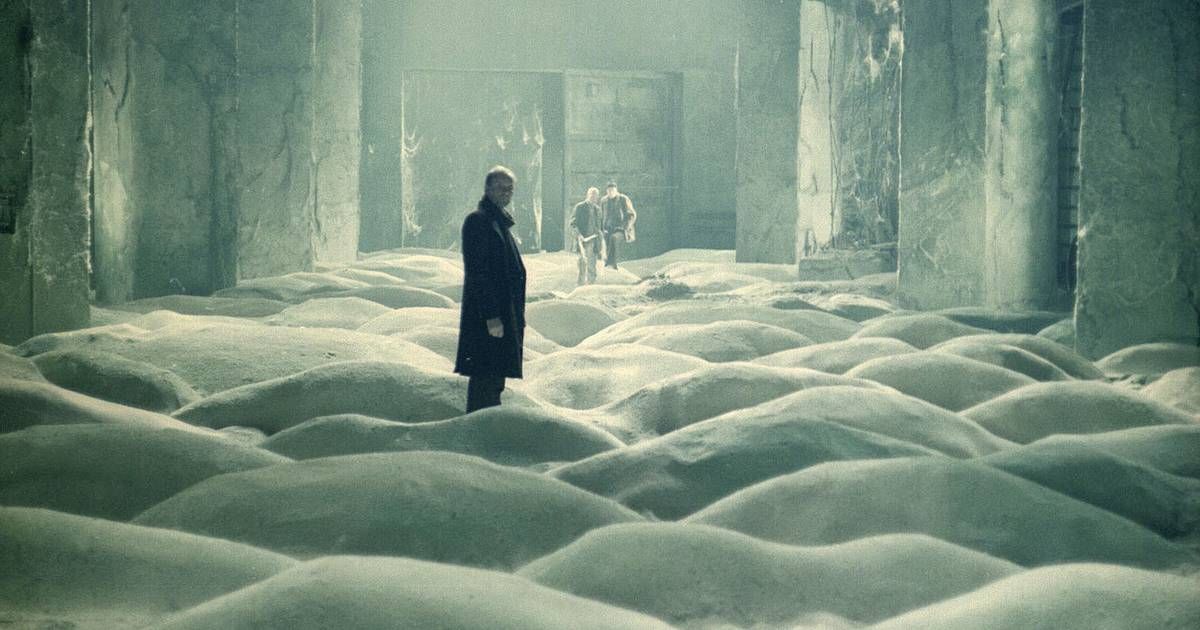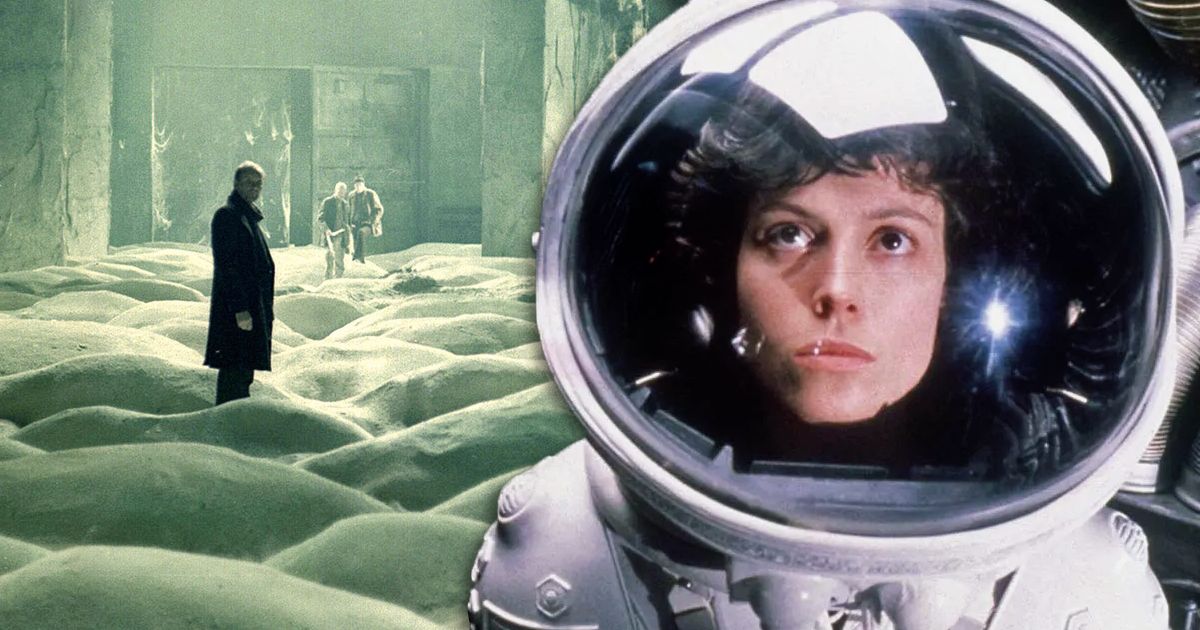summary
-
stalker
A classic sci-fi film, this tale of faith in a mysterious wasteland is told through a fascinating but slow-building story. - Critics were initially divided, but
stalker
It is now considered one of the greatest films, and is appreciated for its profound themes and visual imagery. - The appendix leads the writer and professor into a desirable room, reflecting human desires and values, blending simplicity with depth.
In any other context, this might have been the premise of a great joke. But for the most seasoned cinephile, it forms part of the premise of one of the greatest science fiction films of all time. The premise may not seem like much in a genre that is supposed to be full of fantastical concepts and futuristic worlds, but Soviet director Andrei Tarkovsky masterfully weaves a fascinating and complex story around these three archetypes in his 1979 film Spider-Man. stalker (Which was his fifth film in a great but short series of films.)
Even before we explain how Tarkovsky connects these three desperate people to the concept of faith (all in a mysterious and dangerous wasteland), there is something to be said about the connection this film has with the audience in the past, present and future. When stalker The film was first released by the State Committee of Cinematography of the Soviet Union 45 years ago, and critics' reviews were initially mixed, and audiences were initially divided.
As is the tradition with sectarian classics, It wasn't until much later that the appreciation for this interesting sci-fi classic came.When it was recognized in 2012 by the British Film Institute as one of the 100 greatest films of all time. With this honorable momentum, the Criterion Collection stepped in and re-released the film on DVD in 2017 with several new special features and interviews. But most importantly, this underrated masterpiece is surprisingly available to watch on YouTube for free in several different versions.
Appendices and the search for salvation in the region
The Chaser (1979)
- release date
- May 25, 1979
- exit
- Andrei Tarkovsky
- the show length
- 161 minutes
- Studios
- Mosfilm
- Distributors
- Goskino
This is possible stalker This is an unconventional work of science fiction, taking an almost naturalistic approach. With Alexander Kaidanovsky as the stalker, the writer played by Anatoly Solonitsyn and the professor played by Nikolai Grinko are led to an uncharted and unfamiliar place called the Zone. Deep within the area, there is supposedly a sacred chamber that grants the insider any wish he can conceive.The stalker (he was never given a real name) made his living selling these secrets to desperate souls seeking salvation.

Related
The Hunted: How Andrei Tarkovsky's Film Reveals the Meaning of Life
The 1979 masterpiece Stalker is often considered one of the most important films ever made, but what exactly is it trying to say?
While the motivations of each of these three men for taking part in this journey become the driving forces of the film, Tarkovsky simultaneously constructs a dystopia that is both extremely tense and beautiful for the viewer. As a simple yet powerful contrast, he paints the real world in a single, bleak color scheme but chooses to show this supposedly dangerous new area (the Zone) with all sorts of complex colors and sounds that deceptively draw you into the ominous environment. While these simple techniques undoubtedly help to bring the world of the film to life, This editorial selection is a commentary on Soviet life at the time. – This means developing an innate desire to turn away from the hard life imposed by industry and return to the pure nature of God again.
Tarkovsky uses simple men to represent desires in Stalker.
On the way to this mysterious room that everyone looks forward to, the stalker constantly warns his passengers of the unpredictable and unforeseeable dangers. For two hours, the audience holds their breath, focusing on the unbearable dangers that await our group around every corner. But except for a few unintended accidents, nothing sinister actually appears.
on the contrary, Tarkovsky focused on the trio's opposing viewpoints as the film's greatest conflict. – which makes stalker A true spectacle to behold. A profound philosophical and psychological discourse on human desire that leads to a bewildering climax – suffice it to say that some find it enlightening while others find it downright divisive.

Related
Best Sci-Fi Movies of the 1970s, Ranked by Category
When it comes to the best decades for sci-fi cinema, the 1970s come out on top thanks to hits like Alien, Stalker, and other genre favorites.
Although these three men seem to be composed of simple values, They represent different types of dreams and desires.As mentioned before, the reasons that led the writer, the professor, and the pursuer to want to participate in this expedition are different. As the sense of fear and wonder grows as they delve deeper into the area, the audience is able to witness the disintegration of these people.
The writer yearns for inspiration, and hopes that the supposed magic of the chamber will make his work more vivid. Although the professor says he wants to examine the chamber to win a Nobel Prize in his homeland, he is actually carrying a 20-kiloton bomb to blow up the chamber because he doesn’t want anyone with evil intentions to use its power. While he says he would never enter the chamber himself, the stalker also explains that he is explicitly on this mission because he wants to help everyone who has a wish that only the chamber can grant. Despite his disturbing title, Tarkovsky takes this particular paradox a step further later in the film, when the stalker wears a crown of tangled wires on his head, which some religious figures are familiar with.
Tragedy makes Stalker more interesting
Despite the impact that Tarkovsky's film has on its viewer, he should also know that he put great – ahem – deadly – effort into making this film. This resulted in the death of him, his wife, and the actor who played the writer.Anyway, that’s how Vladimir Sharon, the film’s sound designer, sees it. After all, all three of the names associated with Stalker died of the same deadly type of lung cancer—supposedly caused by the chemical plant that was near one of the filming locations shown at the beginning of the movie.
next to stalker The film seems to require sacrifices, but all the core themes of this Soviet-era film helped make it resonate with audiences then and now. The need to save faith in the face of an uncertain future, the learning process behind understanding our inner desires, how to deal with the onset of change in society, and finding contentment in simplicity—Tarkovsky delivers all these morals and more in a dystopian fantasy world where the laws of physics don’t seem to apply. stalker It is truly a beautiful piece that all sci-fi fans should see. It's available on YouTube for free and streaming on Max..



